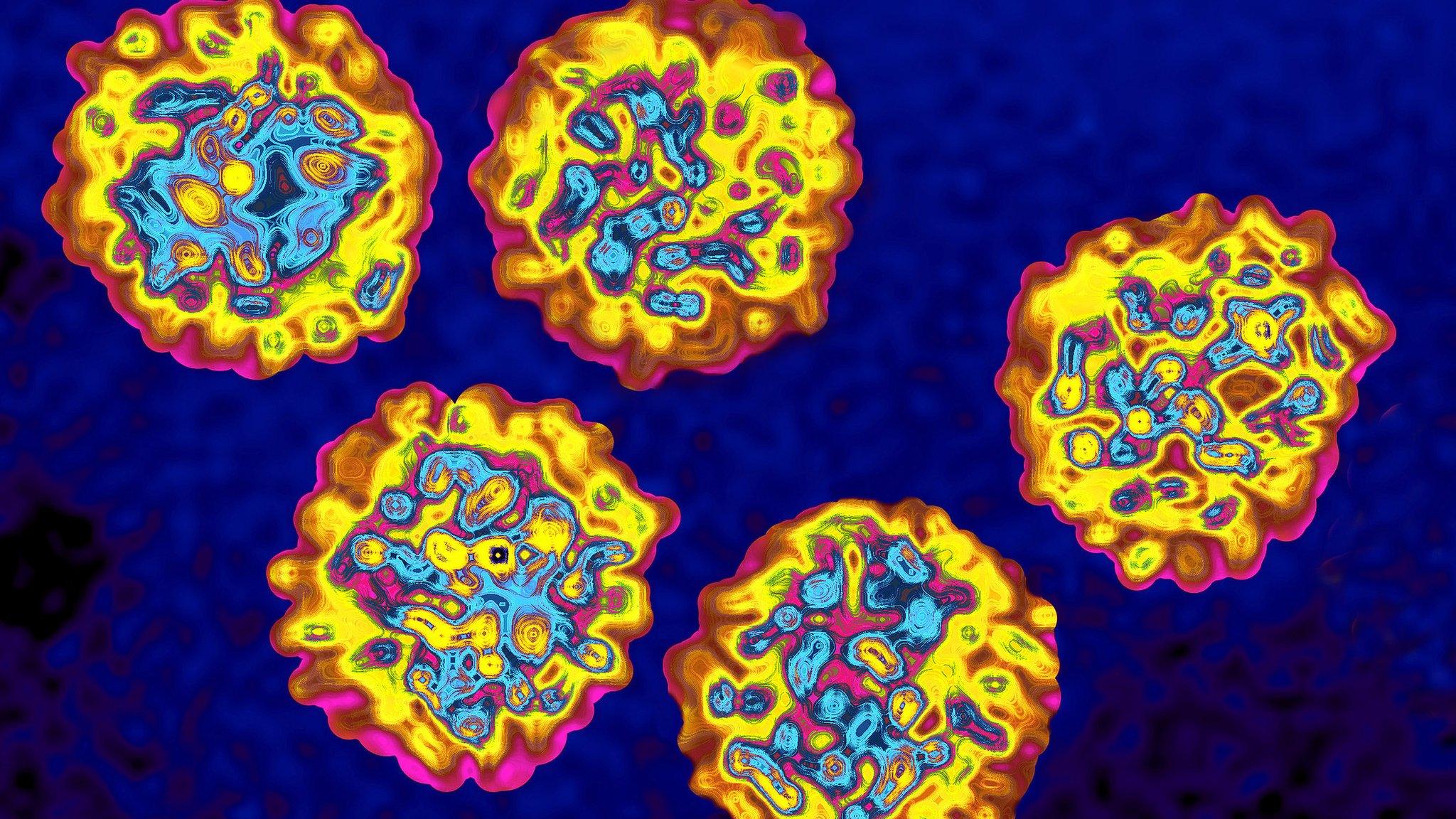Viral hepatitis 'kills as many as Aids or TB'
- Published

Some viral hepatitis infections can increase the chance of liver cancer
Viral hepatitis is one of the leading killers across the globe, with a death toll that matches Aids or tuberculosis, research in the Lancet suggests.
The report estimates that hepatitis infections and their complications led to 1.45m deaths in 2013 - despite the existence of vaccines and treatments.
World Health Organization data shows there were 1.2m Aids-related deaths in 2014, while TB led to 1.5m deaths.
The WHO has put forward a global strategy to tackle hepatitis.
'Startling findings'
Researchers say these plans must be put into action urgently to tackle the crisis.
Viral hepatitis refers to five different forms of virus (known as A, B, C, D, E) - some can be spread through contact with infected bodily fluids and others (A and E) through contaminated food or water.
Most deaths worldwide are due to B and C, which can cause serious liver damage and predispose people to liver cancer. But because people don't always feel the symptoms of the initial infection, they can be unaware of the long-term damage until it is too late.
Scientists from Imperial College London and the University of Washington examined data from 183 countries, collected between 1990 and 2013.
They found the the number of deaths linked to viral hepatitis rose by more than 60% over two decades - partly due to a growing population.
Deaths from diseases such as TB and malaria have dropped.
Dr Graham Cooke of Imperial College London described the findings as startling.
He said: "Although there are effective treatments and vaccines for viral hepatitis, there is very little money invested in getting these to patients - especially compared to malaria, HIV/AIDS and TB.
"We have tools at our disposal to treat this disease - we have vaccines to treat hepatitis A and B and we have new treatments for C.
"However the price of new medicines is beyond the reach of any country - rich or poor."
The study suggests the problem is biggest in East Asia.
But unlike many other diseases, deaths from viral hepatitis were higher in high and middle income countries than in lower income nations.
The WHO hepatitis strategy, which was put forward in May 2016, includes targets to reduce new cases of hepatitis B and C by 30% by 2020, alongside a 10% reduction in mortality.
The WHO says countries and organisations will need to expand vaccination programmes, focus on preventing mother-to-child transmission of hepatitis B and increase access to treatment for hepatitis B and C, to help ensure these targets are met.
- Published12 April 2014

- Published28 July 2014
